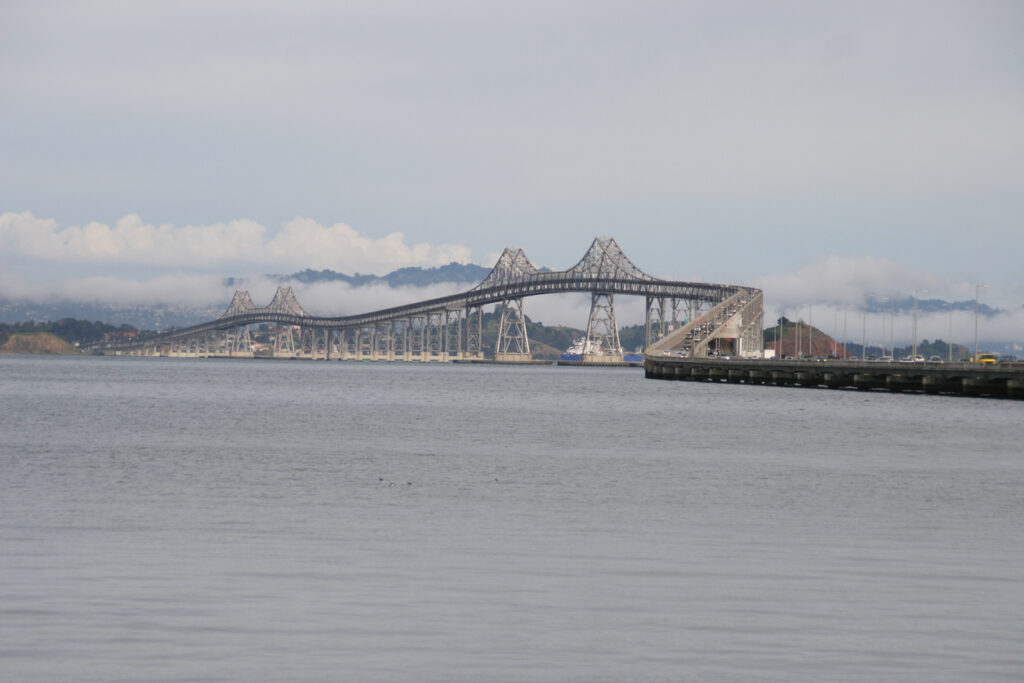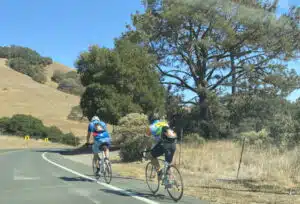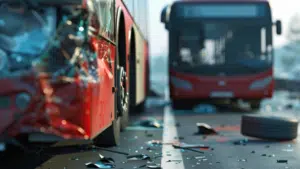This week’s question comes from Shawn J., in Novato, who writes:
Q: “I read your column every week. I was heading home from an appointment [earlier this month] in the East Bay and got stuck for hours when the Richmond Bridge was shut down because of falling concrete. While I was sitting there, I was wondering who would be responsible for any injuries caused if the concrete crashed through a windshield, or caused someone to swerve, leading to injury? Later it turned out that only a car was damaged, thank God, but the question still lingers in my mind.”
A: Shawn, first of all, thank you for being a loyal reader. It feels good to know people actually read this column! Believe it or not, sometimes it takes up to three hours to research and write as I strive to provide substantive responses with citations to California statutes and case law.
The Richmond-San Rafael Bridge, connecting Marin and Richmond along Highway 580, opened in 1956. It is a 5.5 mile long cantilever and truss bridge with a steel structure and a concrete deck, different from the Bay and Golden Gate Bridges, which are suspension bridges. It was originally three lanes but, in 1977 it was narrowed to two to accommodate a massive water pipe feeding water from the East Bay to Marin during a drought that left Marin with no other reliable water source. In 1978, when the pipe was removed, the third lanes were not reopened to traffic. In 2018, given a double-digit increase in traffic volume, a third lane was opened on the westbound lower-deck during rush hour. The third lane on the upper deck is slated to become a pedestrian/bike way.
As the bridge reached its originally projected useful life, a $762,000,000.00 retrofit project was completed in 2005 by Tudor Saliba, a major highway and civil engineering firm, under contract with CalTrans. The work included retrofitting and reconstruction of the decking’s concrete and expansion joints. This is the ultimate source of the concrete’s failure and Thursday was not the first time since then that concrete has fallen onto the lower deck. In early 2006, just months after the retrofit was complete, concrete chunks fell from holes in the upper deck, leading to another $25,000,000.00 in retrofit costs.
The bridge is under constant physical stress, and not only from its substantial traffic flows. The bridge connects land sitting on the Rodgers Creek Fault, running through Marin and Sonoma, with land on the Hayward Fault, which runs through the western part of Alameda, and tremors regularly test the bridge’s retrofitting, designed to withstand a 7.4 magnitude quake on the east and an 8.3 quake on the west. The bridge is also subject to high winds that put lateral stress on the structure and cause bridge closures from time to time. The most recent structural failures appear to be occurring in the expansion joints, which look like zippers connecting stretches of concrete and allow the roadway to expand and contract under various loads, temperatures, tremors, and wind conditions. CalTrans claims to have inspected the joints last August and found no problems.
Under California Code of Civil Procedure Section 337.15, which sets a ten year statute of limitations for “latent” property defects not apparent on reasonable inspection, the contractors, designers, and engineers who retrofitted the bridge in 2005 are most likely free and clear of any responsibility. However, CalTrans may be responsible under Government Code Section 830, which prohibits maintaining a “dangerous condition of public property,” defined as a non-trivial defect that creates a substantial risk to people using the property with due care. Govt. Code Section 835 provides for governmental liability if “the dangerous condition created a reasonably foreseeable risk of the kind of injury which was incurred, and . . . either: (a) a negligent or wrongful act or omission of an employee of the public entity within the scope of his employment created the dangerous condition; or (b) the public entity had actual or constructive notice of the dangerous condition a sufficient time prior to the injury to have taken measures to protect against the dangerous condition. Actual notice occurs when someone is actually aware of a defect as a result of inspection, observation, or report. Constructive notice exists when there was, or should have been, an inspection program to evaluate safety hazards (if funds and means existed for such a program) and a condition had existed long enough that a reasonable inspection should have led to the discovery of the condition and its dangerous character.
I believe a legal basis exists to hold CalTrans liable. If injury is caused in the future by falling concrete, CalTrans will most certainly be held accountable. Let’s hope it doesn’t come to that.









